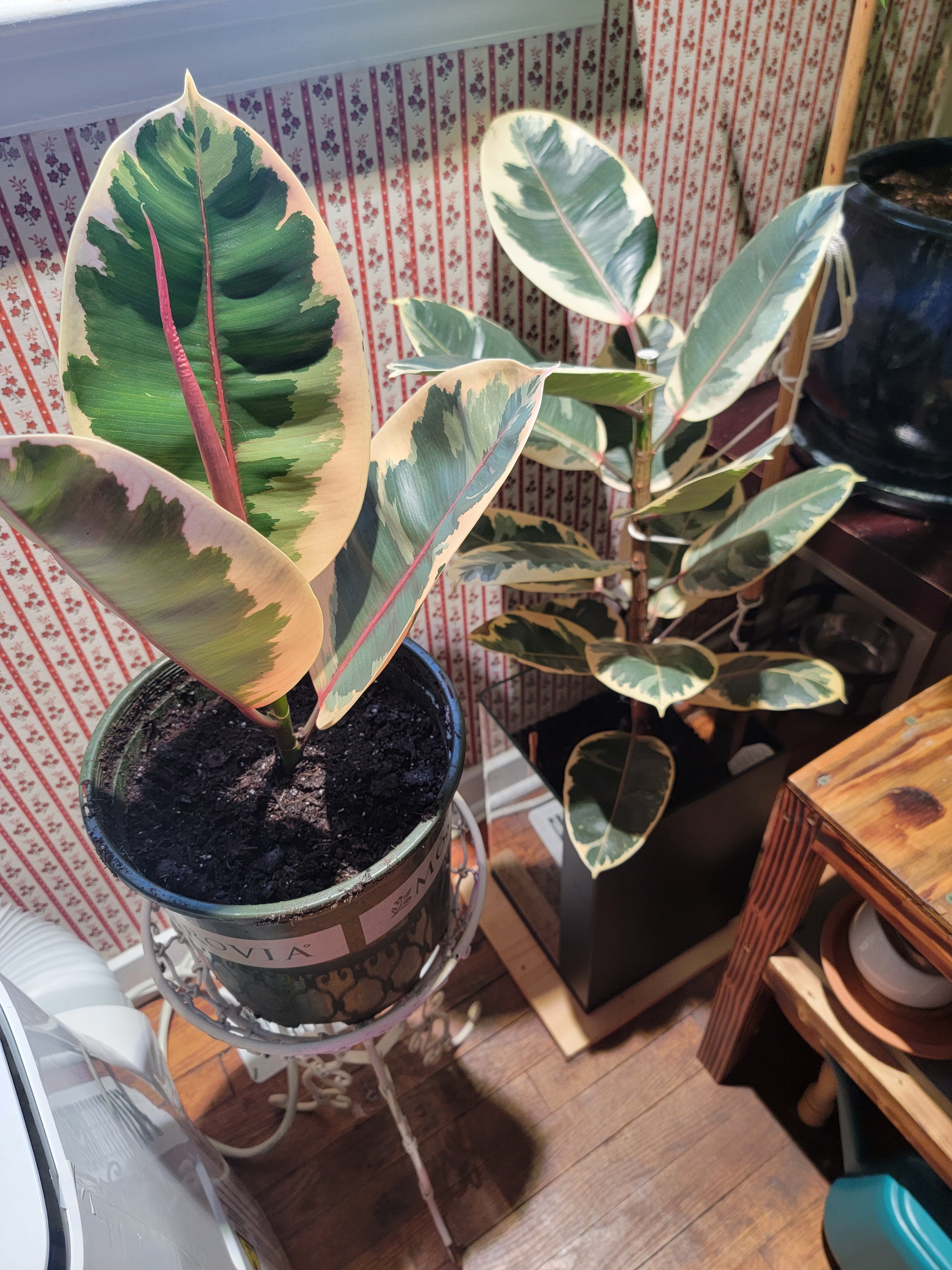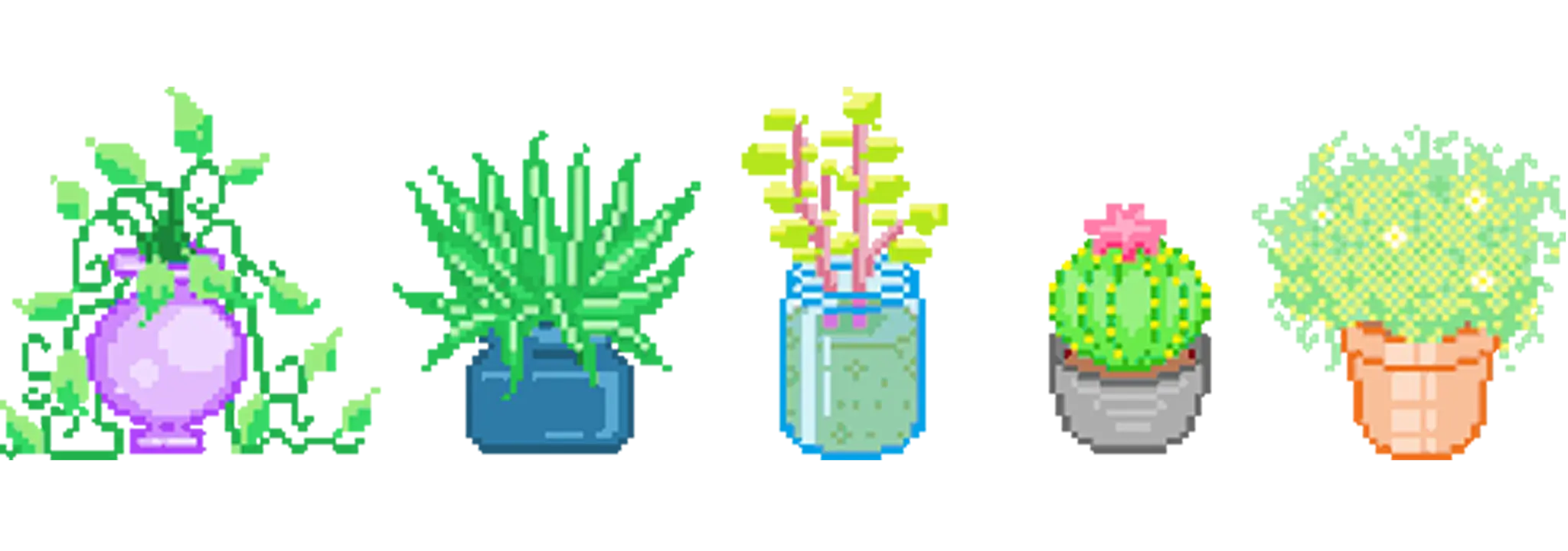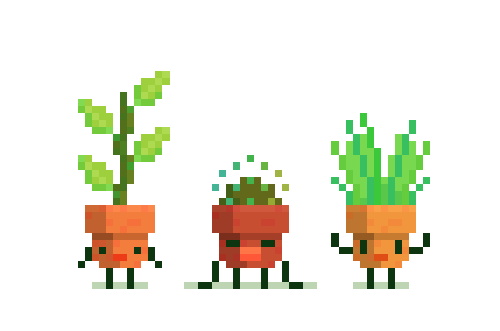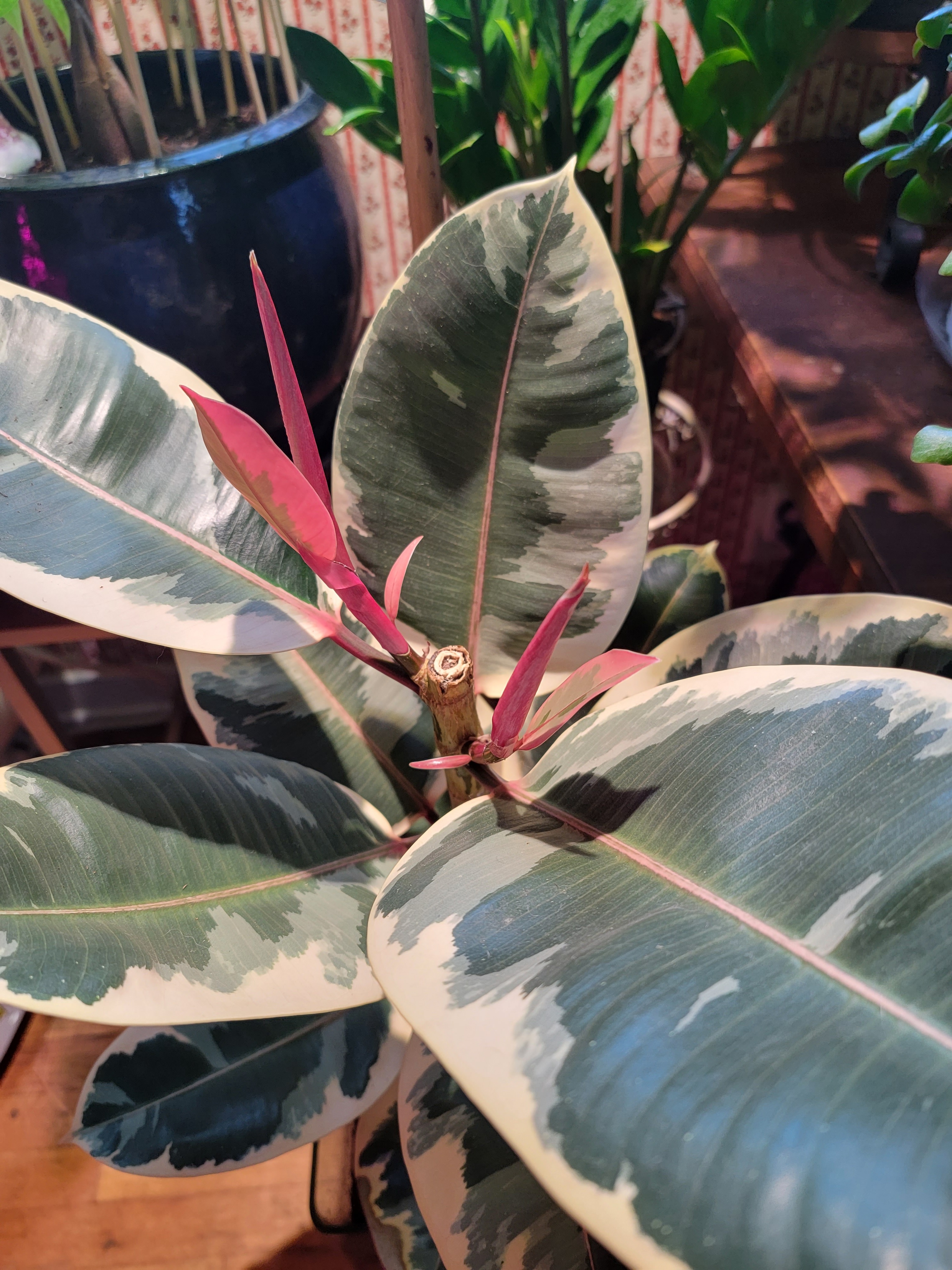Some big dumby with my name (T'was me) posted earlier this week with a totally not correct way to propagate ficus elastica (rubber tree, tineke) from a leaf. So anyway here is the proper way to prop it with pictures.
‐-------------------------------------------‐------------------

- Step one: mark where you would like to make your first cut (i use a loose zip tie). This cut will make the mother tree bush out at the highest node. Plan ahead, and make your cut.
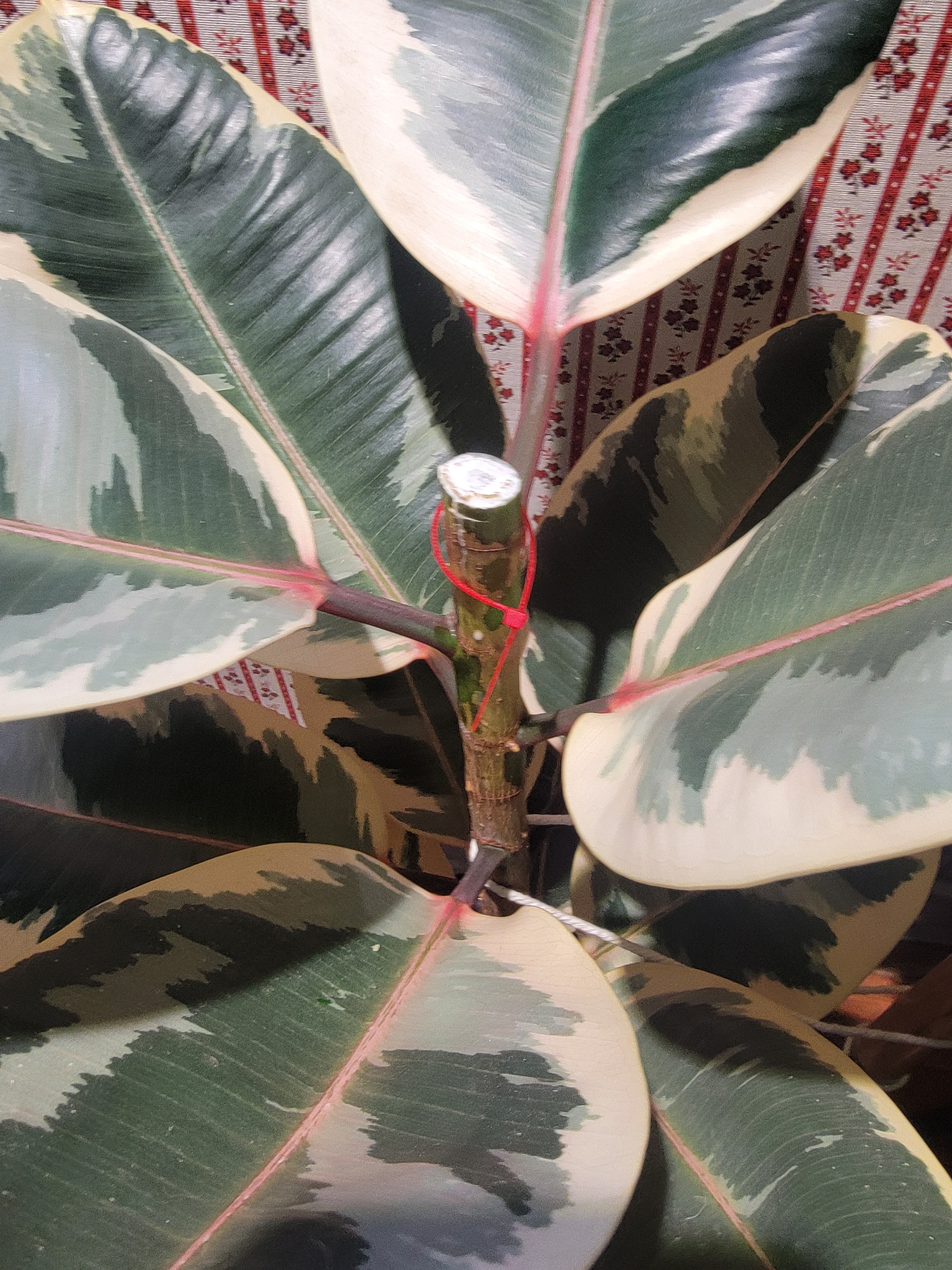
‐-------------------------------------------‐------------------

- Step two: process the props by cutting up from the bottom every 2 leaf nodes. leave 4-6 leaves/nodes at the very end of the piece (this last chunk is your reward, you are doing great).
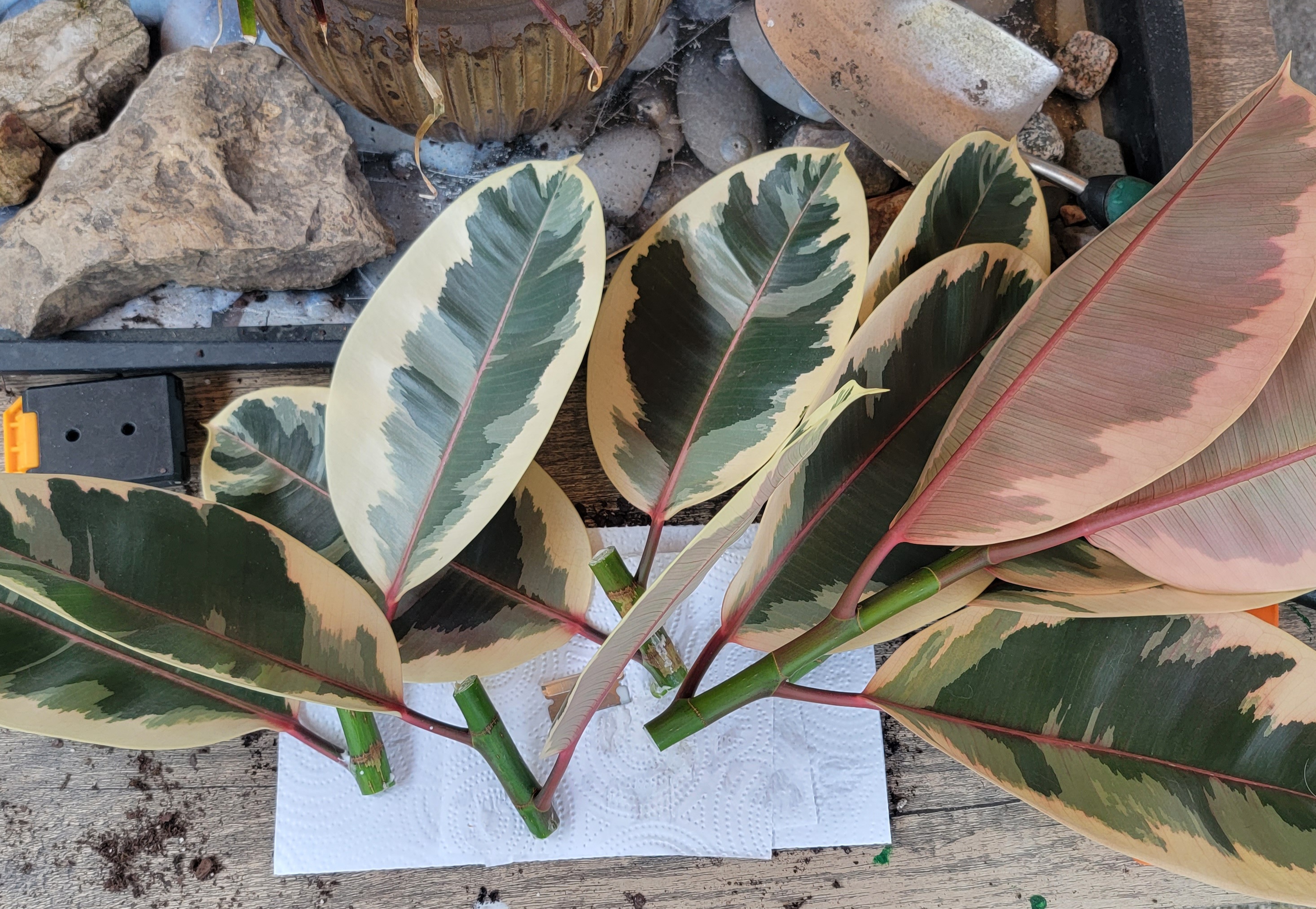
‐-------------------------------------------‐------------------
- Step three: Remove the lower leaf entirely from each piece, and the lowest 2-3 leaves on the largest piece.
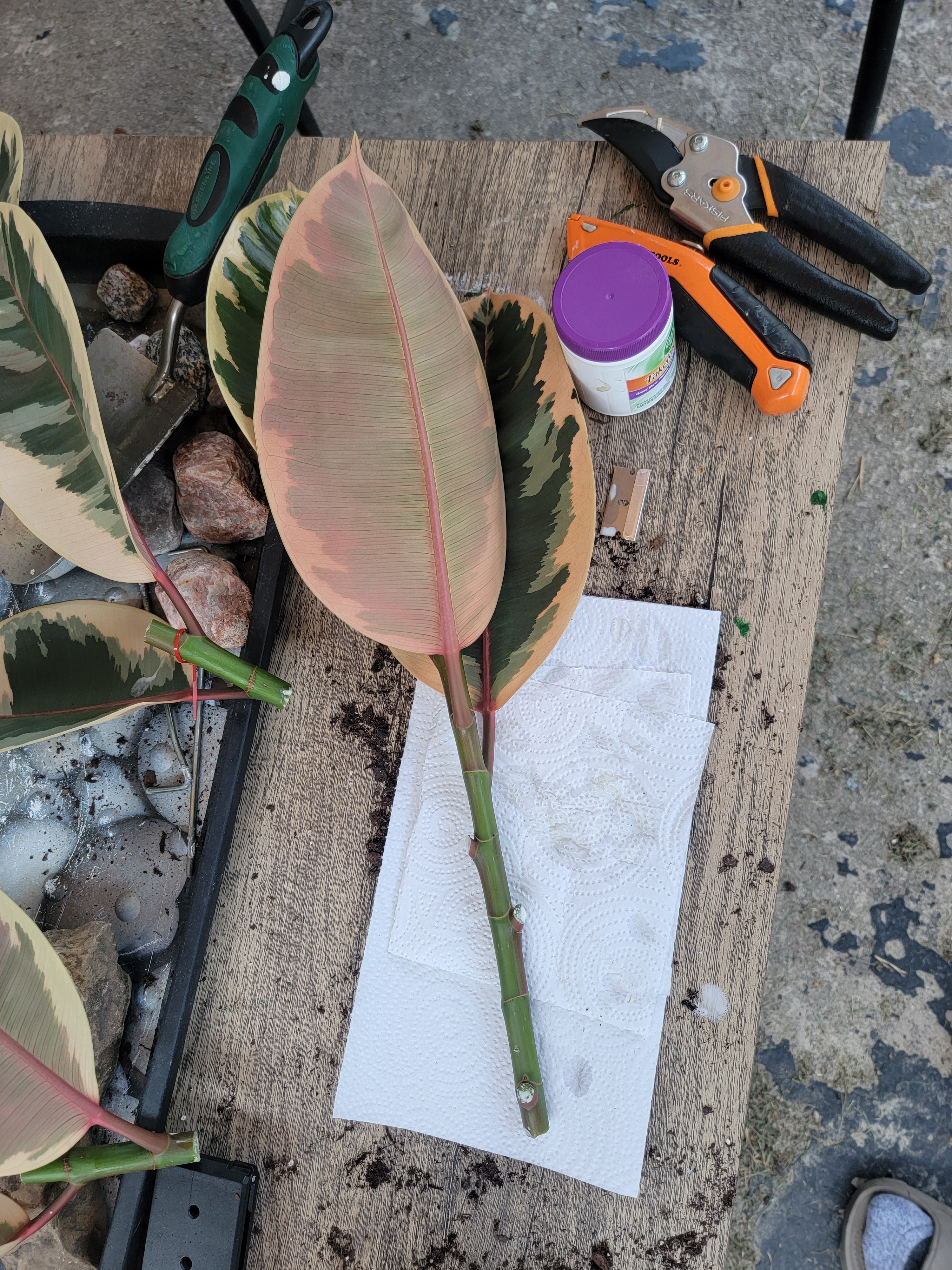
‐-------------------------------------------‐------------------
Step four: dip the bottom of your cuttings into rooting hormone. Be generous.
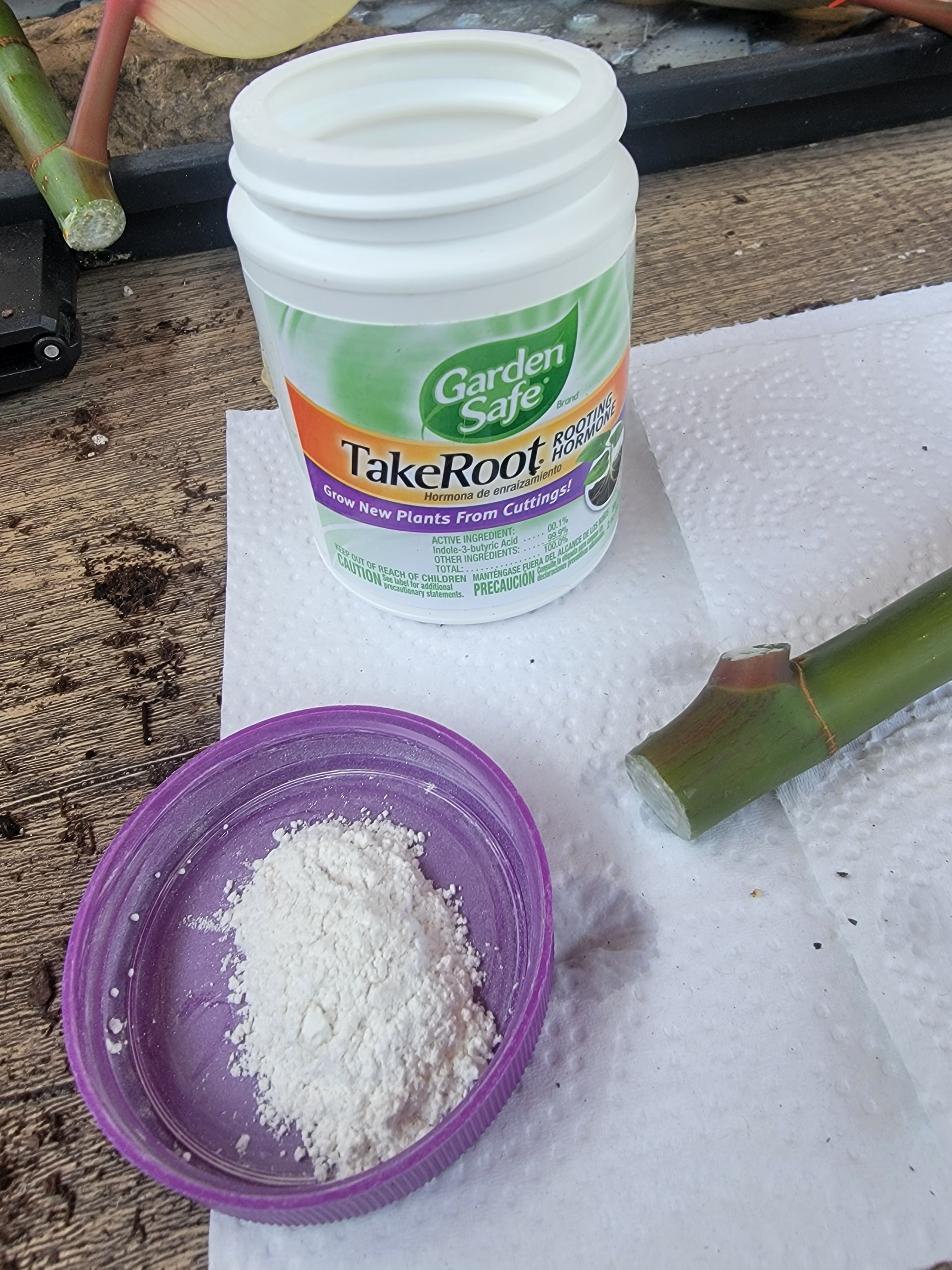

‐-------------------------------------------‐------------------
- Step five: firmly grasp your new cutting and gently cram them into the pot you forgot to fill up with a fast draining potting soil before you started. Be sure to completely cover the lower node and keep the dirt about as high as the remaining leaf-node.
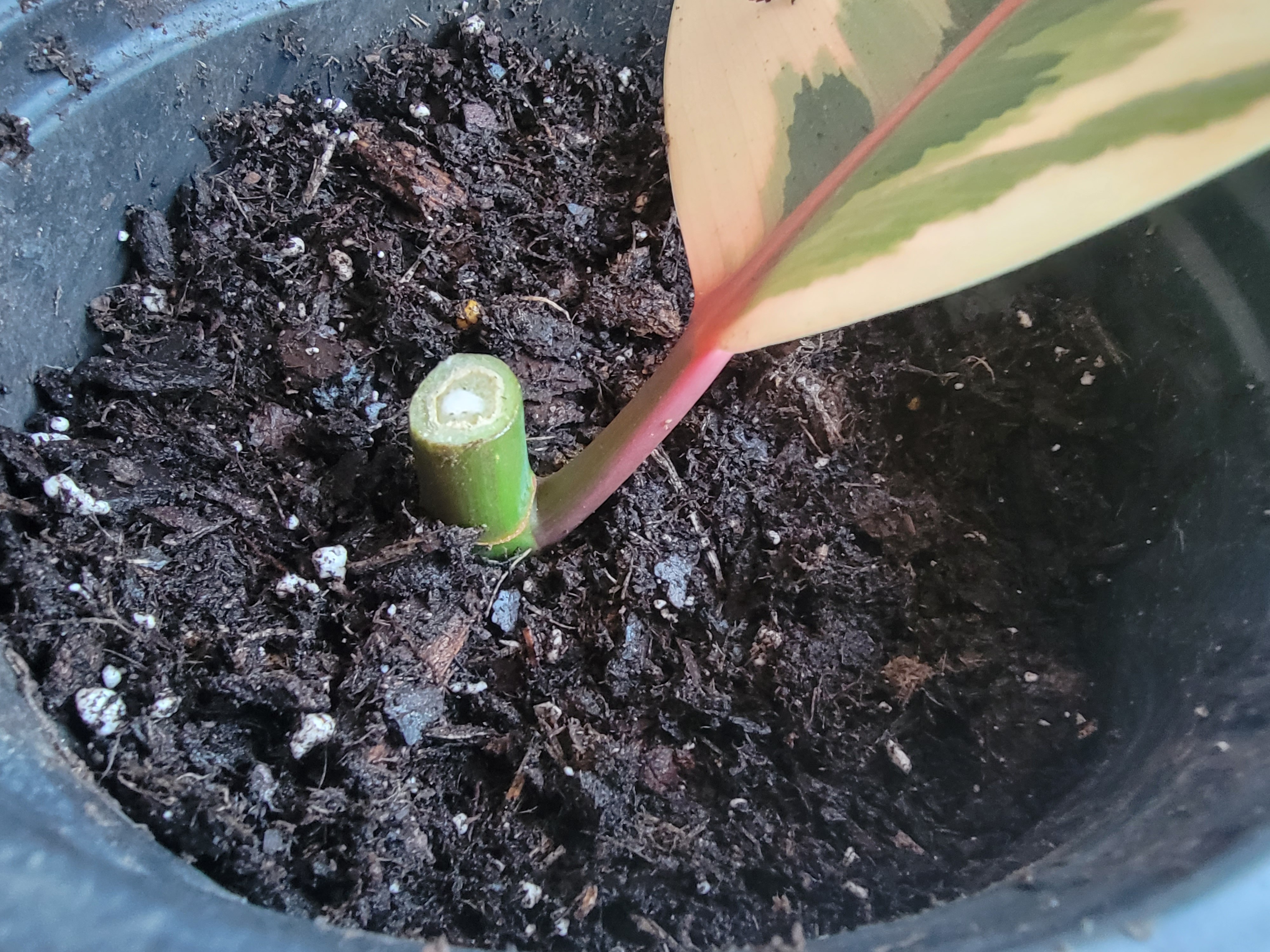
‐-------------------------------------------‐------------------
- Step six: Put the smaller props in any excessively humid environment where they can still get some indirect light. I use my favorite clear tote under a canopy, lightly sealed. Keep the soil moist.
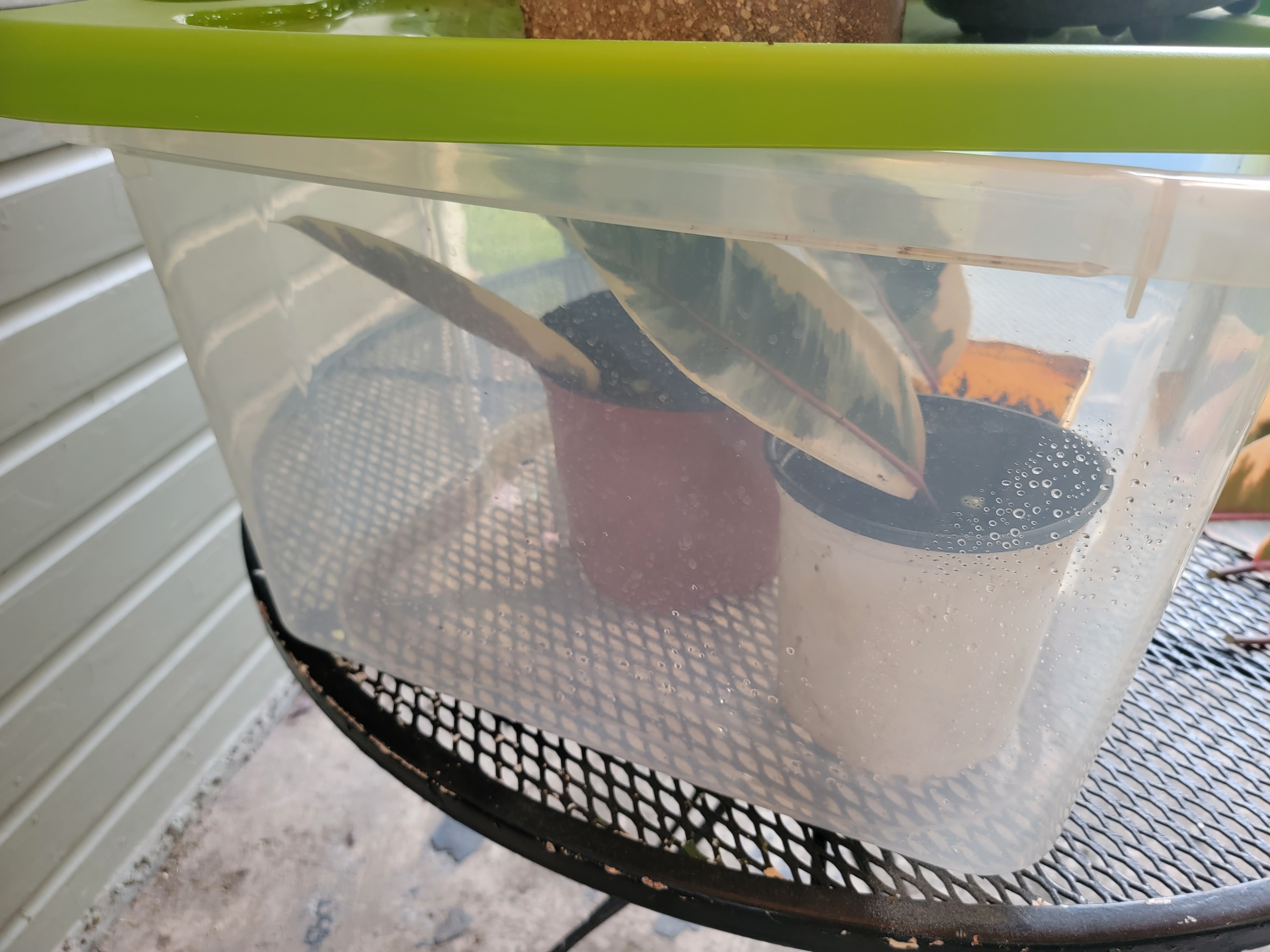
Roots should form in 6-12 weeks. Some may take a long time, some may die. I'd bet youre glad you made 5 now, huh?
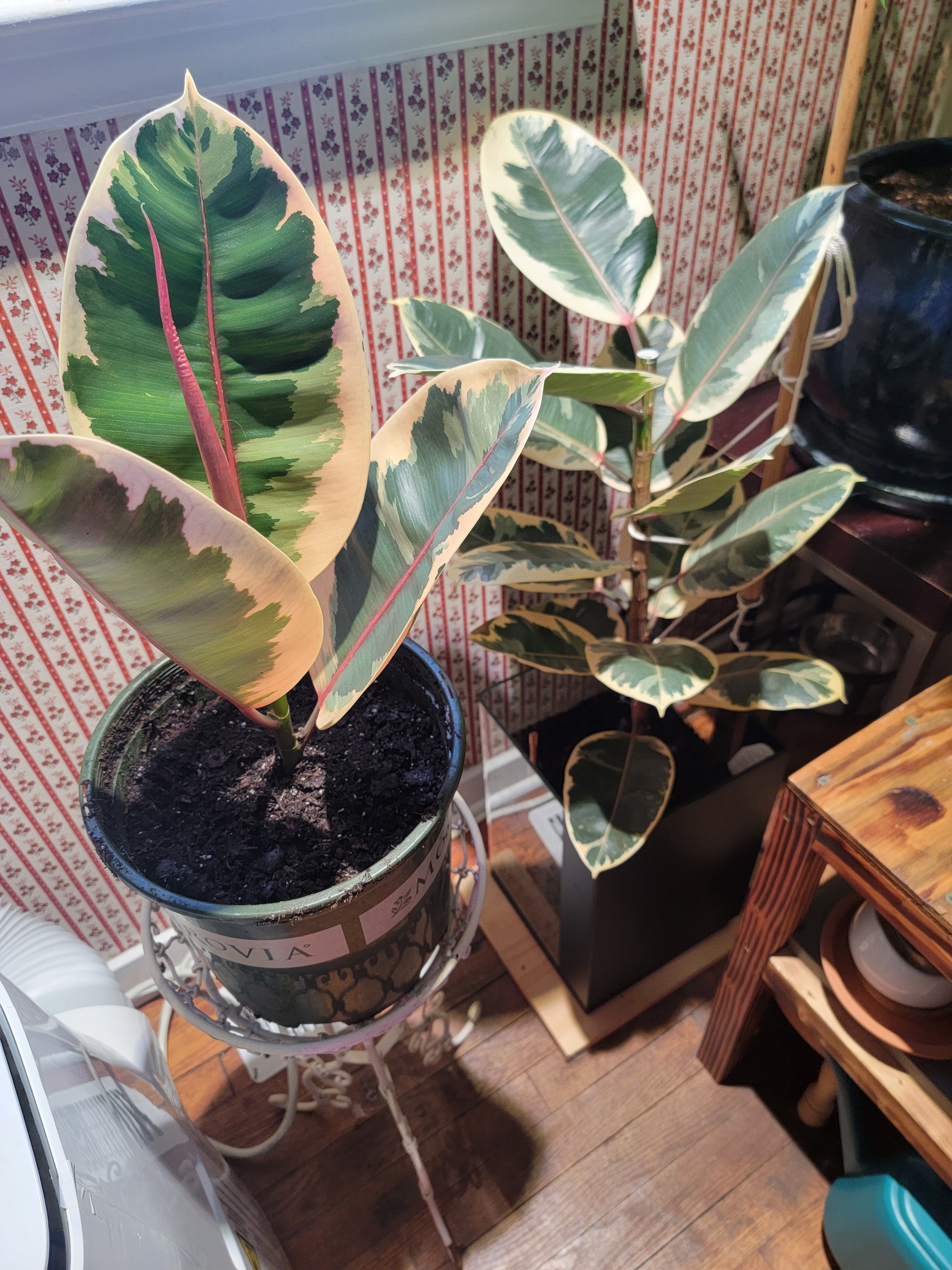
If you know what to do with all these leaves please let me know;

